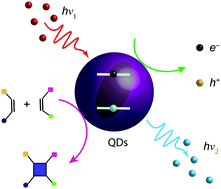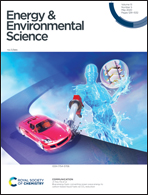Transforming energy using quantum dots
Abstract
Colloidal quantum dots (QDs) have emerged as versatile and efficient scaffolds to absorb light and then manipulate, direct, and convert that energy into other useful forms of energy. The QD characteristics (optical, electrical, physical) can be readily tuned via solution phase chemistries in order to affect the flow of energy, initially contained in the photons of light, using rational design. Key parameters under control are the size and shape, internal composition (e.g., alloys, core/shell heterostructures, semiconductor/metal interfaces), surface composition (ligand chemistries), and film composition (e.g., QD–QD electronic coupling, bulk heterostructure formation, QD/biological interfaces). In this review, we summarize recent progress using QDs in energy conversion architectures with the express goal of transforming optical energy to other forms of energy, including electricity, photons with different energies, and chemical bonds, i.e., photovoltaics, photon up- or down-conversion, and photocatalytic process, respectively. The advantages of using QDs in absorbing and then directing and converting optical energy over molecular chromophores are highlighted. Finally, we discuss ongoing challenges and opportunities associated with using QDs for absorbing, manipulating and directing the flow of energy.



 Please wait while we load your content...
Please wait while we load your content...